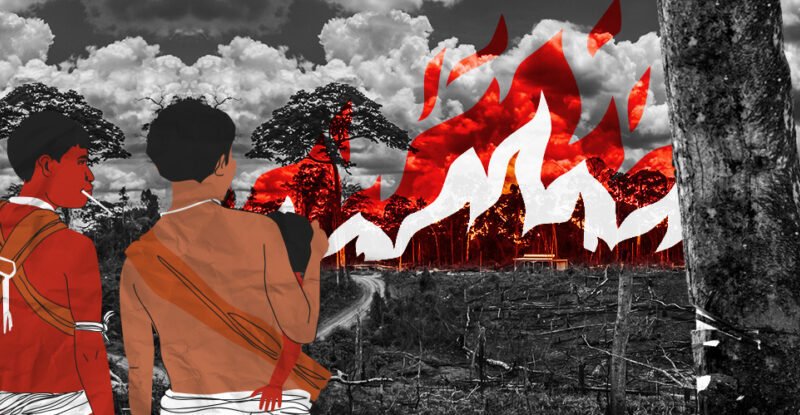Analysis of data from the Geo-Yanomami group shows that, in addition to mining, the territory also has records of deforestation. The problem is driven by advances of agribusiness.
News
Trees in the western and southern Amazon are less likely to survive long periods of drought
Study published in the journal ‘Nature’ sought to understand how different parts of the forest respond to drought. The research was led by a Brazilian scientist in partnership with 80 other authors and surveyed the conditions of 540 trees of 129 different species scattered across Brazil, Bolivia and Peru.
Ferrogrão railway line will affect six indigenous lands, 17 conservation units and three isolated tribes
Exclusive survey reveals a much greater impact than estimated by agribusinesses. Ministry of Indigenous Peoples shows concern and demands consultation, but Lula’s minister of transport is optimistic about project launched by Bolsonaro.
Despite lawsuit, Casino Group still sells beef from an Amazonian Indigenous land
A new investigation shows that farms located in the Uru-Eu-Wau-Wau Indigenous Territory in the Brazilian Amazon supplied two JBS meatpacking plants that sell beef to brands of the French supermarket giant.
New analysis reveals that 59% of the rivers inhabited by the Yanomami suffer impact from mining and invasions
Survey led by the INPE and Fiocruz, in partnership with InfoAmazonia, was conducted based on satellite images of indigenous land and analyzes the impact of territorial change on rivers and communities, including mining, degradation and deforestation. Over 62% of the Yanomami population live in areas under the influence of invaders.
Illegal gold miners remove equipment and escape crackdown in Amazonas
Satellite images show that the interruption of gold mining immediately changed the color of the river. Operators of dredges, which can cost up to US$1.4 million, said they planned to return to the area after the government anti-mining operation ended.
Preserving Indigenous Lands Saves $2 Billion in Public Spending Per Year on Treatment of Fire-Related Illnesses
The fires are largely responsible for the pollution related to respiratory and cardiovascular diseases. A study shows that the Amazon rainforest is capable of absorbing 26,000 tons of particulate matter per year and that indigenous territories contribute 27% of this total. Preserving them prevents 15 million new cases of illness every year.
PPCDAm: new plan against deforestation includes technologies to anticipate devastation and investment in bioeconomy to develop the Amazon
The 5th phase of the PPCDAm, a plan first launched in 2004, presents four axes for containing advancing deforestation from 2023 to 2027. The project will depend on 13 ministries for its execution and will serve as the base for achieving the goal of zero deforestation in the Amazon by 2030.
The history of cacao in the Amazon from arrival in Brazil to alternative for the local bioeconomy
Native to the Amazon, cacao helps preserve the forest intact, generate income and recuperate degraded areas. With demand outpacing production, the chain connected to the fruit in the country still lacks incentive for growth and development for local producers.
70% of the Amazon forest could be degraded by 2050
In addition to deforestation, forest degradation provoked by human action is among the main sources of carbon emission. Fire and drought are the main factors responsible for future degradation, indicative of the gravity of climate change. Even if the Amazonian countries achieve the promised goal of zero deforestation in 2030, the degradation will continue, as David Lapola explains in an interview with InfoAmazonia.











